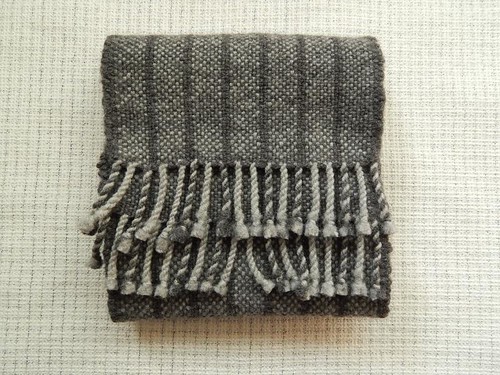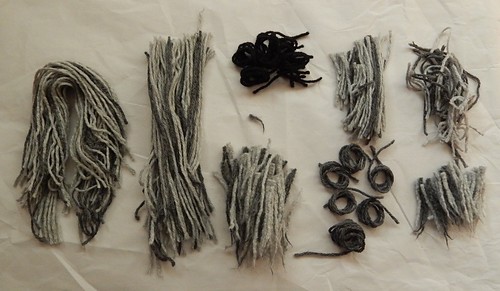
I'm still happy about the fringe, my first twisted fringe, and its A-B-A-B-B-A pattern. I like it much better than the simple overhand knot tassel that knitters frequently use. Hm... there"s no reason a knitter couldn't borrow this technique.
Having come to weaving from knitting, I was surprised by the amount of loom waste. Intellectually I knew there would be loom waste, but it still triggered a certain amount of thrifty clucking. What to do with so many leftover bits? Even discounting the lost yarn from warping the loom incorrectly, there was the lost yarn on the cloth end and on the warp end of the loom, and from spreading the warp. All necessary, so this newbie weaver will simply have to adjust.

Although the loom waste was amazing, I didn't have nearly as much draw in as I thought I might. I think I need to increase my tension for weaving. I'm sure wool yarn can take it, less certain about how other fibers would behave.
I was also surprised by the allocation of time for the project – pretty much equal amounts of time spent on warping, weaving, and finishing. Knitters may swatch, knit, and finish, but the majority of time is spent knitting. Which is another way of saying weaving creates fabric much faster than knitting and uses yarn much faster. Bad news for a slow spindler if ever handspun is to be woven! But, onward.
No comments:
Post a Comment